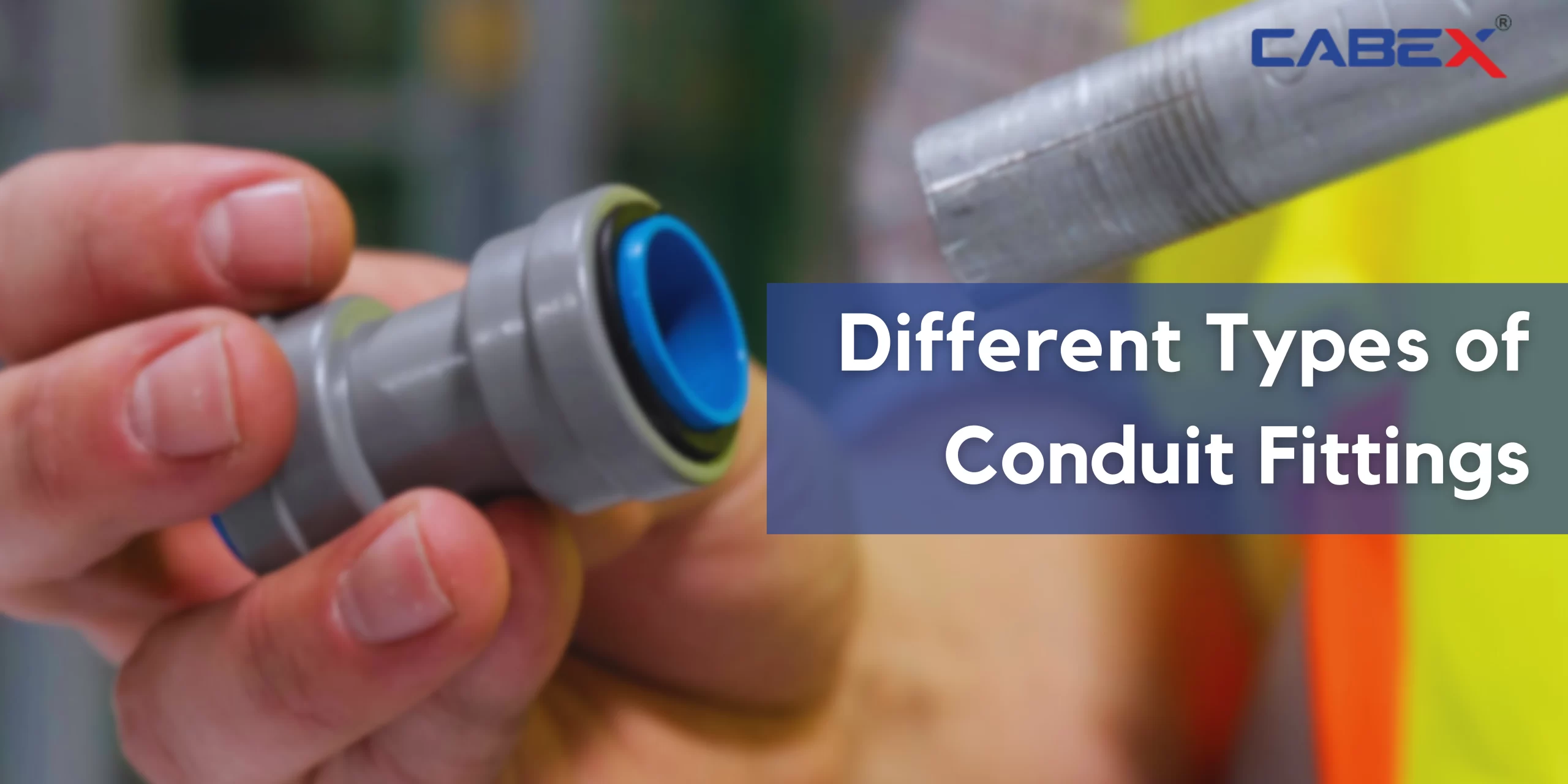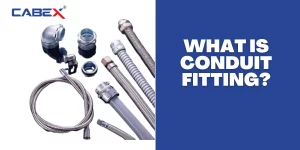Introduction
Conduit fittings play a crucial role in electrical installations, providing protection and organization for electrical cables and wires. They ensure safe and efficient routing of electrical conductors, guarding against damage and promoting a tidy, organized wiring system. In this blog post, we will explore the Different Types of Conduit Fittings available, their applications, and the importance of conduit fitting accessories in electrical projects.
An Overview of Conduit Fittings
Conduit fittings are connectors used to join sections of conduit or connect conduit to electrical devices or boxes. They facilitate the secure installation of electrical wiring, protecting it from moisture, dirt, physical damage, and other environmental factors. Conduit fittings come in various materials, sizes, and designs to accommodate different installation requirements.
Different Types of Conduit Fittings
Rigid Conduit Fittings
Rigid conduit fittings are typically made of galvanized steel or aluminum and are designed for heavy-duty applications. They provide excellent mechanical protection and are commonly used in industrial and commercial settings where durability is essential. Rigid conduit fittings include elbows, couplings, connectors, and threaded nipples.
Electrical Metallic Tubing (EMT) Fittings
EMT fittings are made of lightweight galvanized steel or aluminum. They are commonly used in residential and commercial construction due to their ease of installation. EMT fittings include connectors, couplings, straps, and elbows. They are widely employed in applications where flexibility and cost-effectiveness are important.
Flexible Conduit Fittings
Flexible conduit fittings are used with flexible conduits, such as liquid-tight conduit or flexible metallic conduit (FMC). They are made of materials like PVC, steel, or aluminum. These fittings are ideal for installations that require flexibility, such as in machinery, equipment, or areas where vibrations are present. Examples of flexible conduit fittings include connectors, couplings, and bushings.
Intermediate Metal Conduit (IMC) Fittings
IMC fittings are designed for installations that require better protection than EMT but are less rigid than rigid conduit. They are commonly used in areas where additional mechanical protection is necessary, such as outdoor applications. IMC fittings are usually made of galvanized steel and include connectors, couplings, and straps.
Importance of Conduit Fitting Accessories
While conduit fittings are essential for a secure electrical installation, conduit fitting accessories further enhance their functionality and performance. These accessories provide additional support, protection, and convenience in various applications. Here are some important conduit fitting accessories:
- Conduit Hangers and Straps: These accessories help support and secure conduit runs, preventing sagging or movement.
- Conduit Bushings: Bushings are used to protect wires from abrasion where they enter or exit conduit fittings.
- Conduit Nipples: Nipples are short sections of conduit used to connect two boxes or fittings.
- Conduit Connectors: Connectors join conduit sections or connect conduit to electrical boxes.
- Conduit Couplings: Couplings are used to join two conduit sections together.
- Conduit Elbows: Elbows are fittings that allow changes in direction in conduit runs, ensuring smooth routing.
- Conduit Caps and Plugs: Caps and plugs are used to seal off open ends of conduit to prevent debris or moisture entry.
How to Use Electrical Conduit Fittings?
Using electrical conduit fittings is essential for a proper and secure electrical installation. Here are the steps to follow when using electrical conduit fittings:
1. Plan and Measure:
Before you begin, carefully plan the route for your electrical conduit and measure the required length. Consider factors such as the location of electrical devices, obstructions, and any bends or turns needed in the conduit run.
2. Choose the Right Conduit Type:
Select the appropriate type of conduit for your application, such as rigid conduit, EMT, or flexible conduit. Each conduit type has specific fittings designed to work with it.
3. Cut and Deburr Conduit:
Using a conduit cutter or hacksaw, cut the conduit to the desired length. Ensure a clean and smooth cut. Use a deburring tool or a file to remove any sharp edges or burrs from the cut ends of the conduit.
4. Install Conduit Fittings:
Depending on the type of conduit and fittings being used, follow these steps:
- Rigid Conduit: For rigid conduit fittings, thread the fittings onto the conduit. Apply an appropriate thread lubricant to ensure smooth installation. Tighten the fittings securely using a pipe wrench or a conduit wrench.
- EMT: For EMT fittings, slide the fitting onto the end of the conduit. Use a locking mechanism, such as a compression ring or set screw, to secure the fitting in place. Ensure a snug fit but avoid overtightening, as it may damage the conduit.
- Flexible Conduit: Flexible conduit fittings typically involve inserting the conduit into the fitting or using a compression mechanism to secure the conduit in place. Follow the manufacturer’s instructions for the specific type of flexible conduit and fittings being used.
5. Connect Conduit Sections:
When connecting multiple sections of conduit, use appropriate connectors or couplings. Ensure that the fittings match the conduit type and are properly secured. Threaded fittings require tightening with a wrench, while other types may involve compression or locking mechanisms.
6. Install Conduit Supports:
Install conduit supports, such as hangers or straps, at regular intervals to provide support and prevent sagging or movement of the conduit. Secure the supports to the structure using appropriate hardware.
7. Use Conduit Fitting Accessories:
Incorporate conduit fitting accessories as needed. Install conduit bushings to protect wires from abrasion where they enter or exit fittings. Use conduit elbows to navigate corners or changes in direction. Seal off open ends of conduit with caps or plugs to prevent debris or moisture entry.
8. Test and Verify:
Once all conduit fittings are installed, test the electrical installation to ensure proper functioning. Conduct necessary inspections and verifications according to local electrical codes and regulations.
Best Conduit Fittings and Accessories in India & Middle East Country | CabexIndia
CabexIndia is renowned for offering the best conduit fittings and accessories in both India and Middle East countries. With a reputation for delivering top-notch quality products, CabexIndia has become a trusted name in the industry. Their extensive range of conduit fittings ensures compatibility with various electrical systems, making them suitable for a wide range of applications. From durable and reliable conduit connectors to robust accessories like couplings, bushings, and adaptors, CabexIndia provides solutions that meet the highest standards. With a commitment to customer satisfaction, CabexIndia continues to be a leading provider of conduit fittings and accessories in the region.
Conclusion
Conduit fittings are integral components in electrical installations, providing protection and organization for electrical wiring. Understanding the different types of conduit fittings available allows electricians and installers to select the appropriate fittings for their specific applications. Additionally, utilizing conduit fitting accessories enhances the overall functionality and performance of conduit systems. By ensuring the proper selection and installation of conduit fittings and accessories, electrical projects can achieve optimal safety, reliability, and efficiency.
Plastic Cable Gland vs Metal Cable Gland






